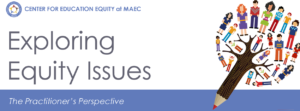Welcoming Schools: Creating LGBTQ Awareness for Educators


By Johanna Eager
Program Director, Welcoming Schools
Human Right Campaign
September 2017
In my over 20 years in education, I have had the opportunity to work with educators all over the country. As Director of Welcoming Schools, I have found that elementary school educators I talk to have received little, if any, education during their teacher preparation programs around being LGBTQ-inclusive in the classroom. In my experience, providing professional development to educators around LGBTQ inclusivity can help them to fill in these gaps. That is precisely where Welcoming Schools comes in.
The Human Rights Campaign Foundation’s Welcoming Schools is the nation’s premier professional development program dedicated to providing training to educators to create respectful and supportive elementary schools in embracing family diversity, creating LGBTQ-inclusive schools, preventing bias-based bullying, creating gender-expansive schools, and supporting transgender and non-binary students. We know that early education is key to preventing harassment later on and that teachers play a critical role in creating an environment in which all children can thrive. Educators work daily miracles, but if they are going to be fully inclusive, they need to be equipped with the tools to do so.
Being LGBTQ-inclusive in elementary school is a full-time job. At Welcoming Schools, we believe that educators need to hold consciousness about LGBTQ identities every day, and not only when implementing a single LGBTQ-inclusive lesson plan. Inclusivity is woven in the fabric of daily classroom interactions and the learning environment. In elementary school, LGBTQ inclusion is focused on families, actual or perceived emerging LGBTQ identities, and responding to stereotypes and/or questions that students bring with them to school.
Families are children’s first frame of reference for their world. Children need to know that their families matter both in and outside of their homes. An estimated 6 million Americans have an LGBT parent, and educators must ensure that those family structures are represented and respected. Teachers should read aloud and make available books that feature, for example, two moms and two dads and elicit conversations around marriage equality.
Throughout their lives, students will encounter LGBTQ people, or they may be LGBTQ themselves. Without accurate information, students will not be adequately prepared to understand and respect LGBTQ people. Teachers must be proactive in providing age-appropriate LGBTQ definitions for children, as well as incorporating LGBTQ topics across the curriculum.
However, it’s not enough to simply use inclusive language and incorporate diverse books and LGBTQ-inclusive lessons. Teachers also have to effectively address bullying and harassment, especially as it relates to students’ identities and families. Caring adults have a responsibility to stop anti-LGBTQ comments, such as when a student says, “That’s so gay.” Educators who are unsure of how to handle such situations can practice responses using our handout. We are thrilled to now be able to offer this resource, as well as three others, in Spanish.
If educators are to effectively serve LGBTQ students and their families, they must commit to making changes in their classrooms and schools. When teachers, administrators, and school staff have not only the desire to improve school climate but are equipped with the skills and strategies to do so, they can make their schools places that are welcoming to not just LGBTQ students and families, but all students and families.
The Center for Education Equity (CEE) at MAEC is inviting members of our advisory board, partners, and other colleagues to share their views on current equity issues. Their opinions do not necessarily reflect CEE’s views or those of the Department of Education and we do not necessarily endorse any products or resources they promote.

